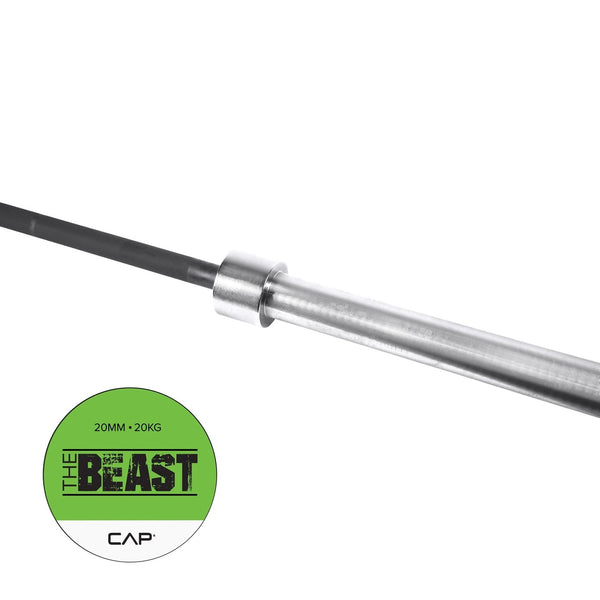Your Cart is Empty
May 25, 2024 4 min read
The squat is an essential exercise for strength training. It is one of the most basic, yet most effective exercises that you can do to strengthen your lower body and build muscle. Whether you are a beginner or an experienced athlete, squats can help you reach your strength training goals.
Shop The Collection: BarbellsSquatting is a compound exercise which means it engages multiple muscle groups at once. This makes it great for building strength and overall fitness. When done correctly, squats target the quads, hamstrings, glutes, calves and core. They also help improve balance and stability since they involve multiple muscles working together.
 Shop The Gear: CAP Barbell "THE BEAST" Olympic Bar, 1000-LB Capacity, 7-ft, $145.99 USD
Shop The Gear: CAP Barbell "THE BEAST" Olympic Bar, 1000-LB Capacity, 7-ft, $145.99 USD
Squats require very little equipment, making them accessible to anyone regardless of their budget or access to gym equipment. All you need is a pair of dumbbells or a barbell and you’re ready to start. The only other thing you may want to consider is investing in a good quality squat rack for safety reasons.
Shop The Collection: KettlebellsThere are many variations of squats you can do for strength training. Here are some of the most popular types of squats and how to perform them correctly:
Squats can benefit your strength training routine in many ways. Here are some of the main benefits of incorporating squats into your workout plan:
To get the most out of your squat workouts, it’s important to make sure you’re doing them correctly. Here are some tips for a safe and effective squat workout:
Squats are a great exercise for strength training and can benefit your overall fitness in many ways. With the right form and technique, you can use squats to increase muscle mass, improve flexibility, and boost your metabolism. So add squats to your workout routine today and start seeing the results!
Shipping Protection gives you peace of mind while saving you time and money.
Shipping Protection provides coverage for eligible orders that are lost or damaged in transit, or stolen after delivery has been confirmed by the carrier. MAGMA Fitness, through its partners, administers the protection program and may receive compensation for these services. Coverage is subject to the terms, conditions, and exclusions outlined in our Shipping Protection Terms & Conditions.